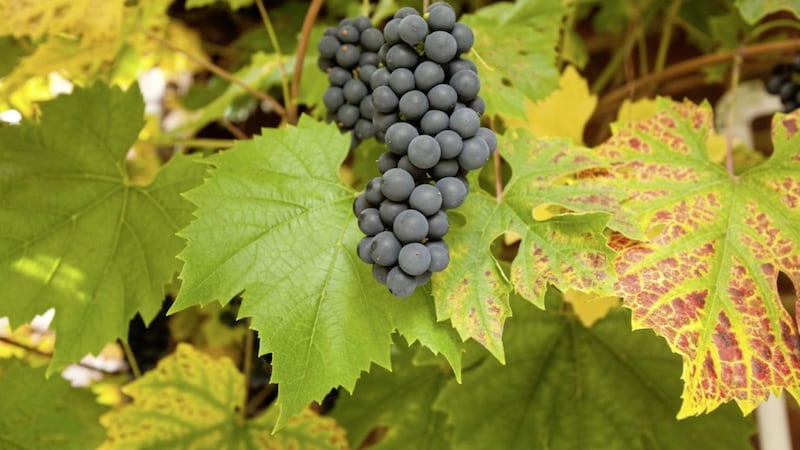Gearing up for this year's Co Down grape harvest...
THIS is my first year I aim to produce a crop of grapes – not just one or two bunches but a reasonable sized crop. Hungry birds notwithstanding, there no reason it shouldn't happen but if it does, I'll still be amazed. For me, the grapevine represents a little bit of exotica on my own patch, a fruit associated with warmer climes like California, Spain or Chile, raised and ripened in a corner of Co Down. Whether it’s possible to grow an edible crop outside this far north in Ireland I can’t say, but recent milder winters, coupled with unprecedented availability of grape varieties whether locally or online, surely make it increasingly likely.
Grapes grow on year-old wood on vines that are at least three years old. If a vine gets established it'll demand quite a bit of attention, whether it's seasonal fertilising, cleaning the stems or regular pruning. Seemingly one advantage of grapevines is that all the maintenance bar a feed or mulch of the base, is indoors, meaning it can saved for those days when the weather is unfavourable.
Over winter, the vine loses its leaves and becomes dormant. During this time, it is flexible and can be easily trained and pruned. With the onset of spring, it hardens and is much more rigid, bleeding sap if pruned on the main stem.
My ‘Black Hamburg’ (sometimes spelled ‘Black Hamburgh’) grapevine was planted about eight years ago, its base outside the greenhouse where it’s cooler, the young vine trained inside and up, forking as it grew to run horizontally along both sides just above head height, held in place by a series of loops suspended from the frame. Doing things by the text book in the initial years means adhering to quite a strict pruning regime, whereas my approach was typically casual, just giving the plant time to settle in, effectively neglecting any fruit it produced to date, leaving it instead for a cheeky blackbird to feast on.
But this year I’ve decided that it’s finally time to maximise yield and enjoy my own homegrown grapes. This means not only fitting a bead curtain on the door to hopefully deter the birds, but giving the vine continuous attention during the growing season, mostly involving pruning or pinching-out unwanted growth. Pruning is essential to ensure the right balance between the number of shoots and the number of buds, which will produce grape clusters. If you allow too many shoots and not enough buds then the foliage will shade the fruit, making it difficult for the bunches of grapes to ripen.
The young fruit appears quite early in the season, little green florets with small spheres at the end of each branch. For dessert grapes, it’s recommended to pinch out the growing tips of the flowering side branches two leaves beyond the flower cluster, which allows only one bunch to develop per side branch. The instruction can get quite precise but my rule of thumb is to minimise the number of leaves and keep the developing fruit on each branch to two bunches.
Recommended grape varieties include ‘Muscat of Alexandria', a flavoursome, amber grape with white blooms and ‘Perlette‘, which is sweet, green and seedless. Popular with beginners, Black Hamburgh is a fast-growing, self-fertilising variety that boasts sweet dark red or purple, seeded grapes and is particularly suited for northern climes.








